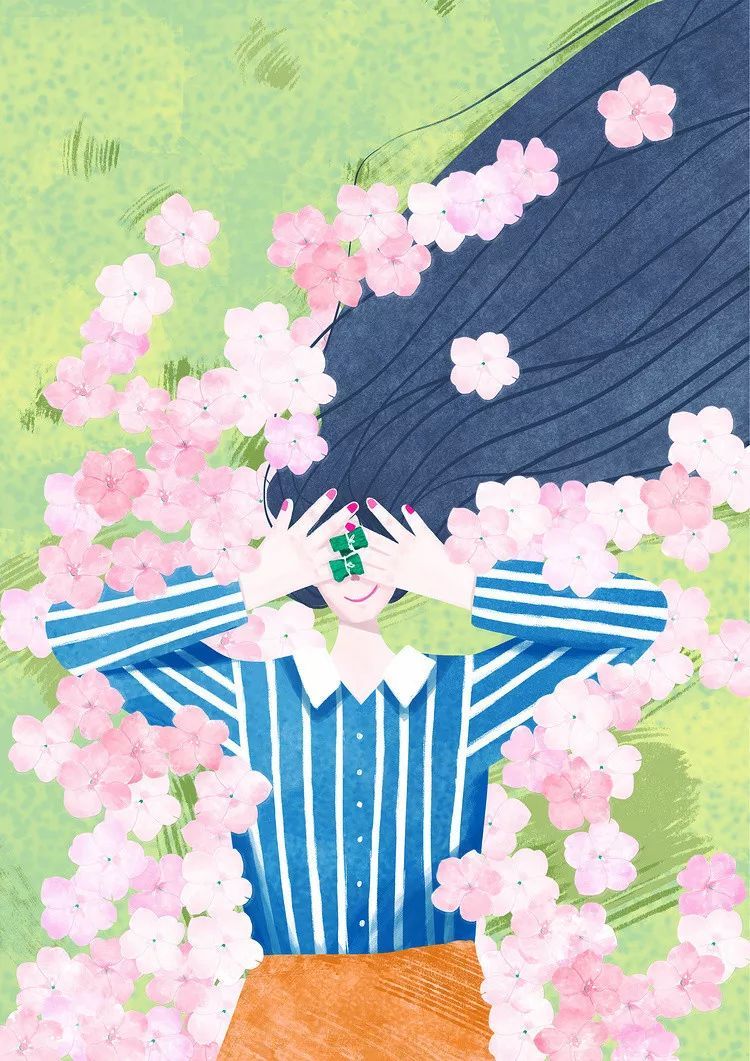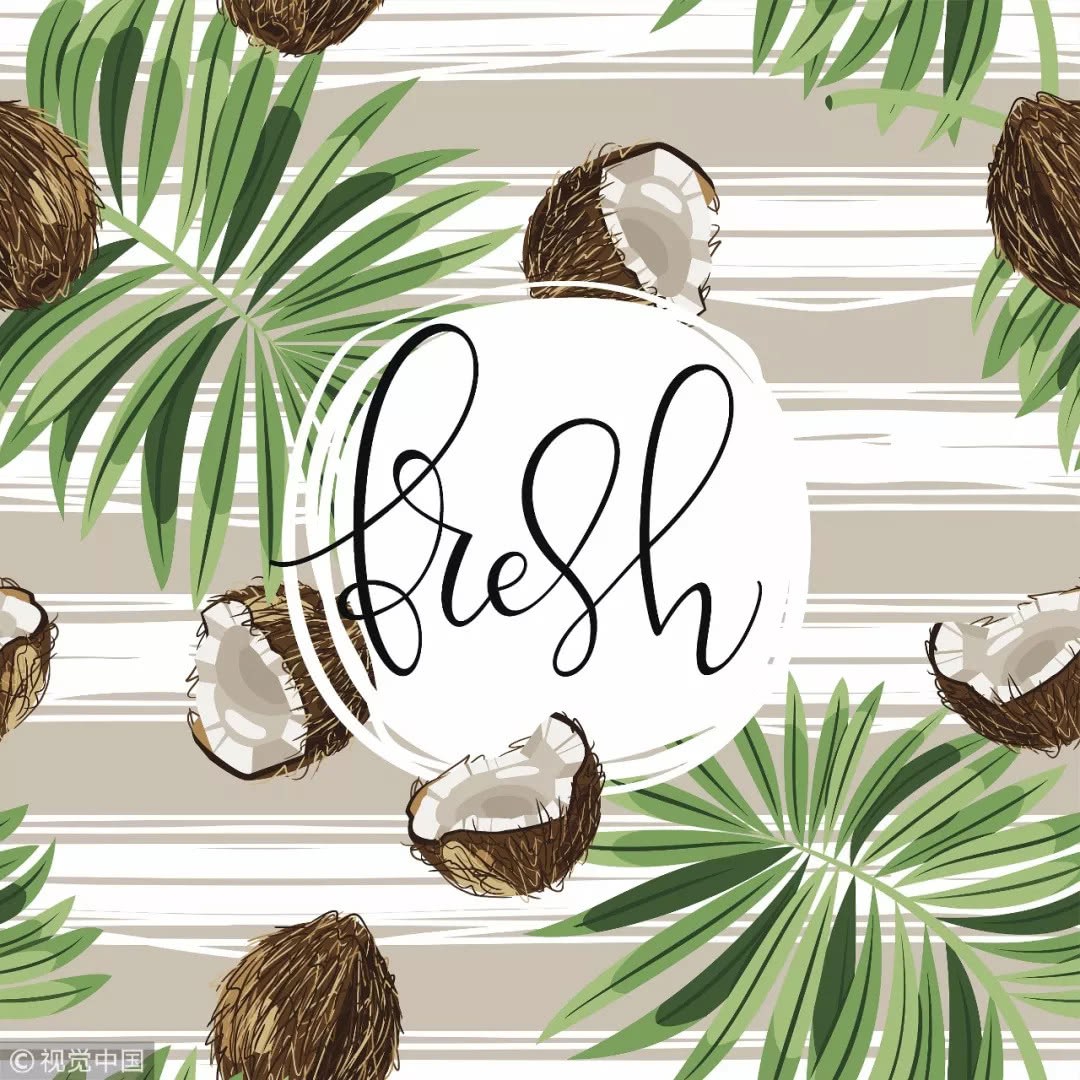For example, the morning dew has suffered a lot.

Fleeting years
Faye Wong
Faye Wong
00:00/04:37
Purple bamboo plum
Tradescantia pallida cv. Purpurea
Alias: purple duckweed, purple golden grass
Rabdosia of the family Caryophyllaceae
Perennial herbs
The overall flowering period of purple bamboo plum is very long, from late spring to late autumn, but a single floret lasts only a few hours from blooming to withering.
In the short course of individual life, Zizhumei shows an unforgettable fragrance.
Three small pink petals with six furry stamens in the center, covered with golden anthers. Does it seem plain? Then you're wrong. There is a lot of ingenuity in it, which shows the evolutionary wisdom of Zizhumei.
For example, golden anthers. I only noticed its strange shape at first, because it was very similar to the Qing palace handle combed by the wreaths. But why is it golden?
In the Chronicles of Weeds by Japanese horticulturist Liu Zongmin, he talked about the golden anthers of Commelina communis, saying, "it is said that insects are not sensitive to red and blue, but they are easily attracted by white and yellow, so red and blue flowers, stamens are usually white or yellow, or have golden pollen. This is a way to attract pollinating insects. " It's a perfect match. In the purple bamboo and plum blossom, I met the bee fly chewing pollen many times.
Does it look like Wei Liulu's Qing palace handle head?
Hook up successfully
The stamen birth mode of Zizhumei is also the first time I have seen it: six stamens are not symmetrically placed on three petals, but one petal has one stamen, one petal has two stamens, and one petal has three stamens. In a radiosymmetric flower like this, stamens should also be arranged symmetrically. This feature left a deep impression on me.
In the middle and upper part of the purple filaments of purple bamboo plum, there are long white hairs. When you zoom in, you can see its unique shape-connected one by one like a rosary, botanically called "rosary long hair", which I met for the first time. These hairs are like a fox skin bib, making the face of purple bamboo plum particularly delicate; they also have a practical function: to catch the falling pollen and increase the chances of successful pollination.
Long beaded hairs on filaments (zoomed in)
When it blossoms, its stamens mature first
At first, the stigma is located in the center of the flower, and then it obviously deviates to one side.
Purple bamboo plum blossom, so commonplace, so winding, so fascinating.
This series of exquisite handwriting is enough to prove the efforts made by Zizhumei to improve the quantity and quality of genes in future generations. And then strangely, I never found its fruit. According to a report from the Chengdu branch of the Chinese Academy of Sciences, the natural seed setting rate of purple bamboo plum is so low that it is difficult to bear fruit even by artificial pollination. It is obvious that purple bamboo plum is a member of the dink family of the plant kingdom and is usually propagated through ramets.
Plants never do useless work that wastes energy. Since there is no result, what is the purpose of all these painstaking tricks before?
There are three sepals outside the petals, translucent with light green
The flower cluster grows at the top of the upper stem branch and is surrounded by two leafy bracts, usually one at a time.
The exact reason has not been determined. One of the reasons for speculation may be the variation after introduction to China. Native to the eastern Gulf of Mexico, Purple Bamboo Plum has been a popular and vibrant indoor plant for quite a long time in the tropics and semi-tropics, but it is now more often planted outdoors as a ground cover plant.
The leaves are alternate and the base expands into a clasping sheath with a long circle of white filamentous hairs on both the mouth and the edge of the leaf.
The stem is stout, fleshy and succulent
In China, purple bamboo plum is also often called purple duckweed, purple golden grass. Many friends, including my mother, simply call it Violet. The name Violet has been heard many times since childhood. It is full of imaginary Western-style romance, and it also appears in mandarin duck and butterfly novels. But I have never seen violets in botany, and this time I specially found out the picture and looked at it.
Matthiola incana, the genus Violet of Cruciferae, is native to southern Europe. Figure: wiki commons
In urban greening, several plants of the family Caryophyllaceae are also common, such as Phyllostachys pubescens, Tradescantia and Artemisia angustifolia. According to the latest classification, they are all classified into the genus Tradescantia. The English name of the genus Artemisia is also very interesting, called "wandering Jew" (wandering Jew). Perhaps it is because they all have the habit of spreading stems and rooting on the ground.
Hanging bamboo plum
Tradescantia, notice that the anther is also golden.
White flowers and purple dew grass, taken close at hand
God has mercy on you grass, there are purple grass, and "dew grass"-that is the name of duck metatarsus in Japan. Their flowers are delicate and delicate, opening in the morning and giving thanks at noon, just like the crystal dewdrops on the leaves in the morning, disappear in an instant. This is the common fate of many plants of the family Caryophyllaceae, which is so beautiful and short-lived that it is regrettable and sad.
Life, vegetation and autumn, in front of the eternal God of time, life is like fleeting. Thousands of years ago, Cao Mengde, a man of great talent, sighed at the festival, saying that wine was a song, and the geometry of life, such as the morning dew, had a lot of bitterness in the past.
In the garden downstairs, the little flowers of purple bamboo and plum are in full bloom day after day, year after year, as delicate and beautiful as when I first met it. However, I am no longer the person I was then, and I think you are no longer who you were at that time. In between, I do not know that many years have been secretly changed.
Note:
1 Purple bamboo plum is introduced from abroad, which makes its scientific name quite confused in our country. In different flora, the scientific name used is often different, which brings some difficulties to identification. In this paper, Tradescantia pallida cv. The scientific name purpurea, Setcreasea purpurea, Setcreasea pallida, is treated as a synonym.
2 the generic name of the genus Tradescantia is named after the father and son of John Tradescant, a 17th-century English botanist and gardener of Charles I. the seed addition word pallida means "pale", which I think probably refers to the color on the back of its petals, which is pale with a touch of purple. The variety name 'Purpurea' (sometimes called' Purple Heart') indicates that it is a horticultural species with violet stems and leaves. This species has won the the Royal Horticultural Society "s Award of Garden Merit".
- Prev

We spend 500 yuan on exquisite manicures and begin to miss the time when we dyed our nails with it.
Peony's love for flowers and plants began at a very young age. When I miss my childhood, I remember many stories related to plants. For example, everyone is familiar with dogtail grass, which can be woven into rings and bunnies.
- Next

After studying the strategy of plant health care, we can't do without these two things if we want to be beautiful and healthy.
Coconut Tree & nbsp;El Dorado Shakira 0.
Related
- Wuhan Hospital Iron Tree Blooming Result Was Instantly Frightened by the Gardener Master
- Which variety of camellia is the most fragrant and best? Which one do you like best?
- What is the small blue coat, the breeding methods and matters needing attention of the succulent plant
- Dormancy time and maintenance management of succulent plants during dormancy
- Minas succulent how to raise, Minas succulent plant pictures
- What are the varieties of winter succulent plants
- How to raise succulent plants in twelve rolls? let's take a look at some experience of breeding twelve rolls.
- Attention should be paid to water control for succulent plants during dormant period (winter and summer)
- Watering experience of twelve rolls of succulent plants
- Techniques for fertilizing succulent plants. An article will let you know how to fertilize succulent plants.

